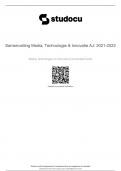Alex omidvar
D1: Evaluate the current law on the crimes of theft, robbery, burglary, fraud and criminal
damage.
Introduction
This assignment is going to thoroughly illustrate and evaluate the current law on the crimes of
theft, robbery, burglary, fraud and criminal damage. Many case laws and scenarios were
analyzed in a comprehensive manner. The actus reus and mens rea of each crime is going to be
evaluated and some areas that require reform is also included. Some qutations are also going
to be imbedded in order to establish ha cohesive piece of work where everything is completely
explained and analyzed. Criticism, modifications, reform as well as my perspective on the law
are included within the evaluation section.
Theft:
Section 1(1) of the Theft Act 1968 (TA 1968) establishes the offence of theft. This section states
“A person is guilty of theft of the dishonestly appropriates property belonging to another with
the intention of permanently depriving the other of it.”
Actus Reus
Appropriation – s.3
The section 3 states the law as such “Any assumption by a person of the rights of an owner
amounts to an appropriation, and his includes where he has come by the property (innocent or
not) without stealing it, any later assumption of a right to it by keeping or dealing with it as an
owner.” This statement refers that theft could occur in various occasion. For instance, if
someone has lend you a book and you decide to sell it, that classes as theft.
Property – s.4
Section 4(1) illustrates the definition of property for the aim of theft. The law states “property
includes money and all other property, real or personal, including things in action and other
intangible property”
General
Things in action are essentially rights which can be enforced with pursuing a legal action, as
they are not in any physical form. For instance, an employee owes some money to a company.
Such a debt is classed as a thing in action. It exists in a way that the company could sell that to
someone else, who would then have the authority to collect money from the employee. There
are other examples that could also be classified as things in action; copyrights, trademarks and
patents are some of the examples.
1












